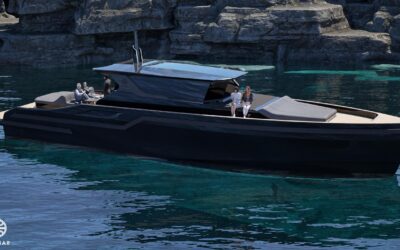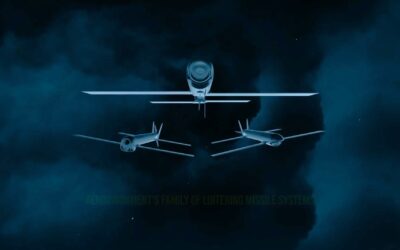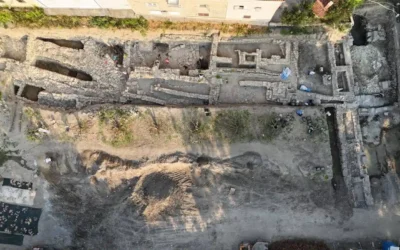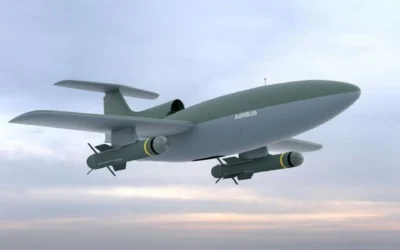RAFNAR Hellas has announced the official opening of its new state-of-the-art shipyard and headquarters in Lavrio, along with a…

To date, a variety of combat vehicles have been deployed in the Ukrainian operational theatre, yet the BTM-3 might be the weirdest and rarest, according to Forbes.
It’s neither a tank nor an infantry fighting vehicle. The BTM-3 is a Soviet trenching machine. It is based on an AT-T heavy artillery tractor – which is, in turn, based on the chassis of a T-54 tank – with a chainsaw-style excavator without featuring any defensive armament.
It is officially designated as a “High-Speed Trenching Machine” used by mechanized infantry units. Its production commenced in 1957 and was exported to Soviet allies, while it has been proven to be durable and reliable for digging ditches, drains, and communication channels.
The system has an NBC protection system allowing it to operate in contaminated environments by means of an instrument, which measures radiation. In addition to this, BTM-3 was equipped with PNV-57T night vision goggles, so it could operate at night.
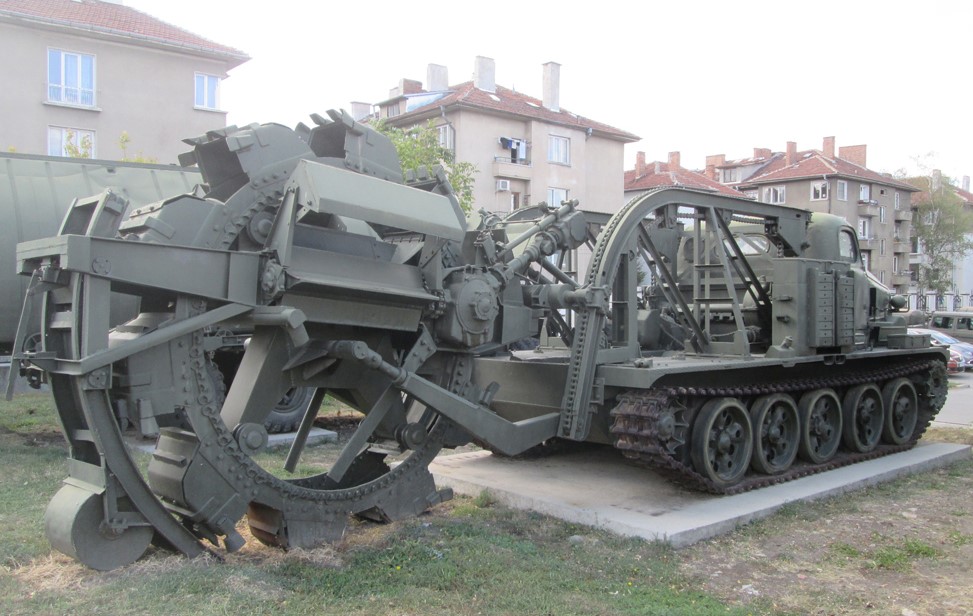
This trench-digging machine has a large rotor with buckets at the rear. In fact, there are a total of 8 buckets, with 160-litre capacity each. The rotor is lowered behind the vehicle and digs trenches. It takes around 5-7 minutes to prepare the machine for digging.
The BTM-3 can dig two main types of trenches. The basic trench is 1.1 deep and 0.9 meters wide. The machine can also dig a full-size trench that is 1.5 meters deep and 1.1 meters wide. In both cases, the width at the bottom of the trench is 0.5 – 0.6 meters. Trenching capacity ranges from 270 to 810 meters per hour, depending on the dig depth and soil type.
Maximum trenching capacity is 1.200 – 1.400 meters per hour, though in this case, the trench will be only 0.4 – 0.5 meters deep. Such trenches were made only if there was no time to dig out standard trenches. In this case, soldiers would dig deeper on their own. Another use of these “fake” trenches is to mislead enemy intelligence.
Further, the BTM-3 can dig straight, zigzag, or curved trenches. The rotor unloads the soil next to the trench, creating a front and rear parapet of the trench around 0.5 meters tall, which provides additional protection. This machine can dig trenches in various types of soil, ranging from sand to frozen soil. Nevertheless, it cannot dig in rocky terrain.
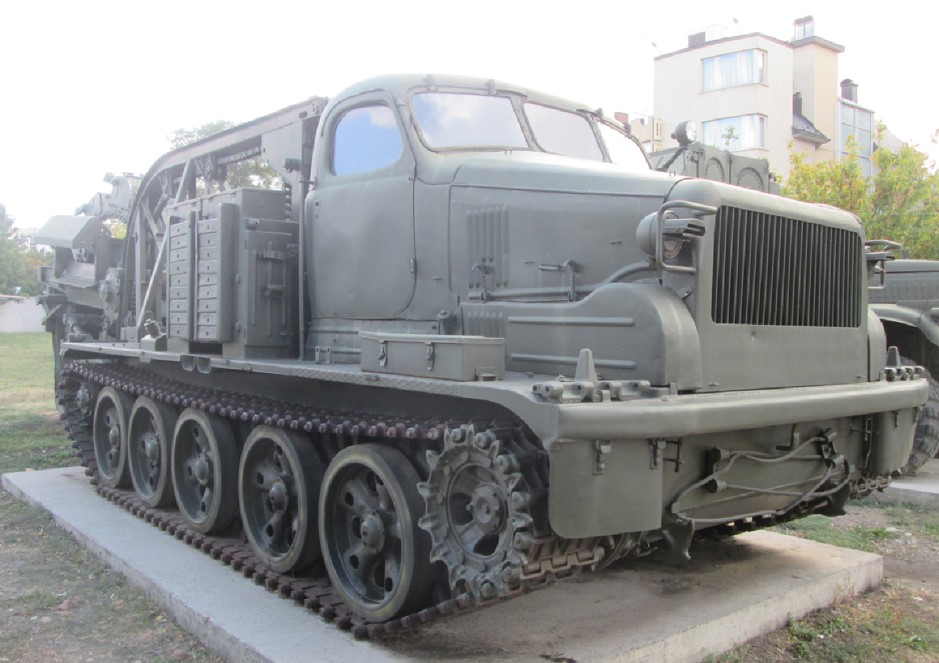
BTM-3 technical characteristics:
- Crew: 2 (can accommodate 3 extra passengers)
- Weight: 27 tons
- Length: 7 m
- Width: 3.17 m
- Height: 4.32 m
- Trenching Performance (Dig depth): up to 1.5 m – Trenching capacities: trench depth of 0.4 – 0.5 m for 1 200 – 1 400 m/h / trench depth of 1.1 m for 270 – 810 m/h and trench depth of 1.5 m for 270 – 560 m/h
- Engine: A-401 diesel with a power of 305 hp
- Maximum road speed: 36 km/h
- Maximum range: 450 – 500 km
- Endurance: 10 – 12 hours
- Vertical step: at least 0.5 m
- Trench: up to 1.8 m
- Fording: 1.1 m

A video (watch at the end of the article) depicts one of the Ukrainian Army’s estimated 10 ex-Soviet BTM-3s speeding along a dirt road in Luhansk Oblast in southern Ukraine. Luhansk is one of the locuses of Ukraine’s counteroffensive, which kicked off on June 4. Since then, Ukrainian brigades have advanced a few miles along several axes.
Trenches have defined the battle. The Russians dug trenches in order to slow the Ukrainians’ advance; now the Ukrainians are digging them in order to consolidate their territorial gains.
It’s apparent that BTM-3s have played a leading role in preparing these trenches, alongside civilian excavators, while trenches currently ‘thread’ through Russian Army doctrine, which the Ukrainian Army also follows to a great extent.
In any case, trenchers have been busy in Ukraine on both sides of the conflict.
Also read: Poland | Procurement of first 3 M88A2 HERCULES armored recovery vehicles from BAE Systems
READ MORE
IVECO DEFENCE VEHICLES – METLEN | Strategic Alliance for the Hellenic Army’s Military Truck Fleet Modernisation
METLEN and Iveco Defence Vehicles (IDV) have signed a Memorandum of Understanding (MoU), establishing an exclusive collaboration…
Prisma Electronics | Delivery of the First Systems for the FDI Frigates
Prisma Electronics has successfully delivered the first systems for the FDI frigates, having passed all rigorous acceptance…
HCDI | The Programmatic Horizon of Research and Development Projects for 2025
The Hellenic Defence Innovation Center (HCDI) announced its Programmatic Horizon of Research and Development Projects for 2025, which…
RAFNAR Hellas | New Shipyard in Lavrio, Expansion in Keratea, and New 62-Foot Vessel
RAFNAR Hellas has announced the official opening of its new state-of-the-art shipyard and headquarters in Lavrio, along with a…
IVECO DEFENCE VEHICLES – METLEN | Strategic Alliance for the Hellenic Army’s Military Truck Fleet Modernisation
METLEN and Iveco Defence Vehicles (IDV) have signed a Memorandum of Understanding (MoU), establishing an exclusive collaboration…
Prisma Electronics | Delivery of the First Systems for the FDI Frigates
Prisma Electronics has successfully delivered the first systems for the FDI frigates, having passed all rigorous acceptance…
Massive Ancient Greek Defensive Wall Unearthed in Croatia
An ancient Greek defensive wall, dating back at least 2,000 years, has been uncovered near the Adriatic coast of Croatia, the…
Airbus | Demonstration of LOAD Against Kamikaze Drones
At the “Unmanned Systems X” trade show held in Bonn, Germany, on 25-26 March, Airbus introduced its new unmanned air defence system, LOAD.










